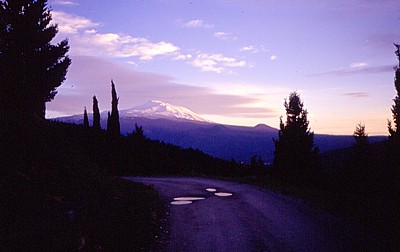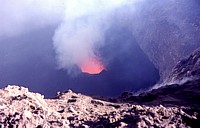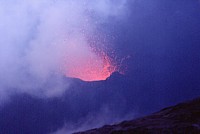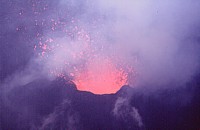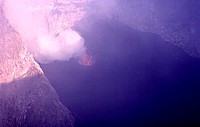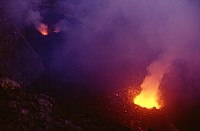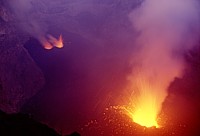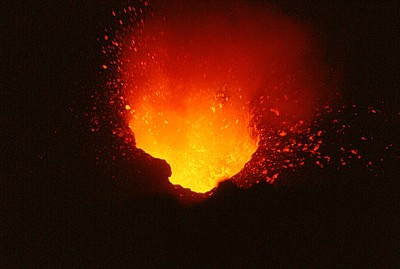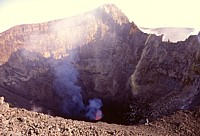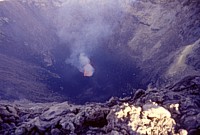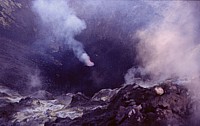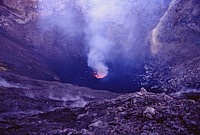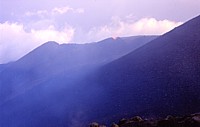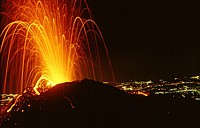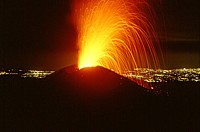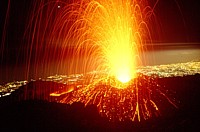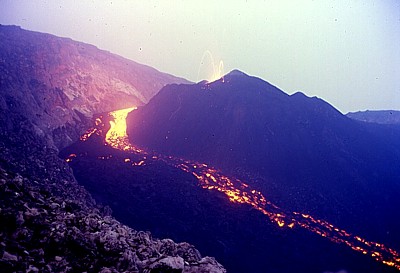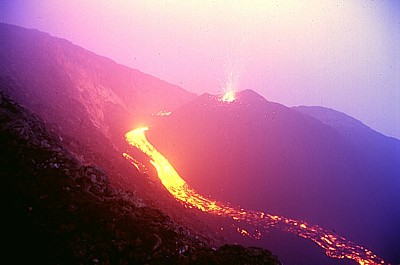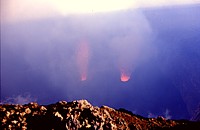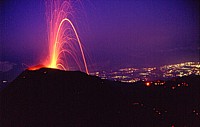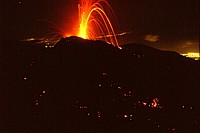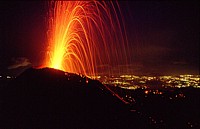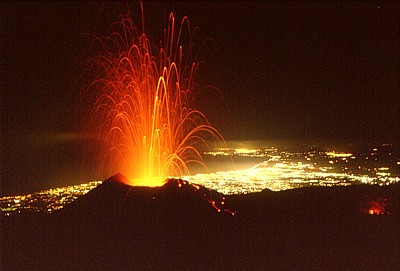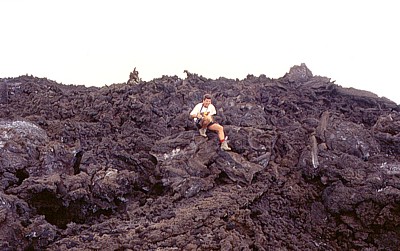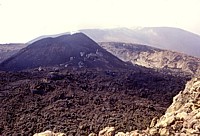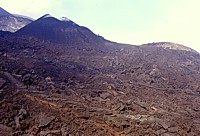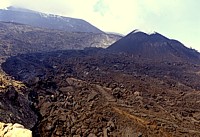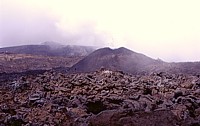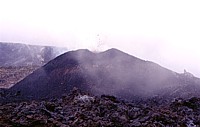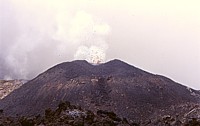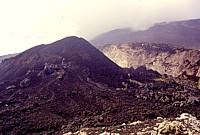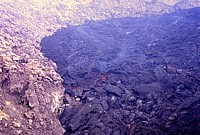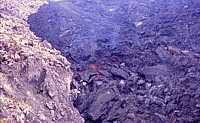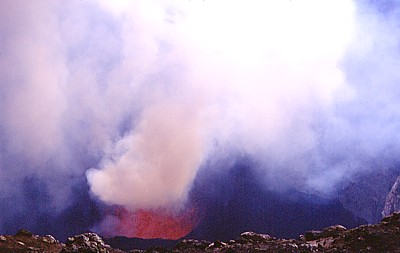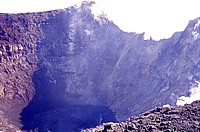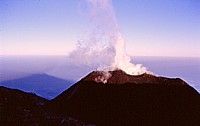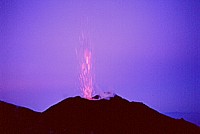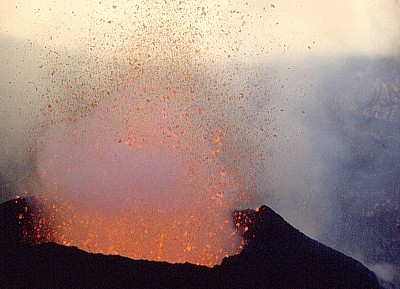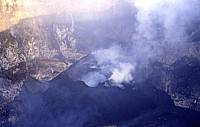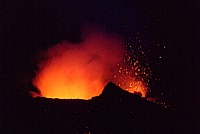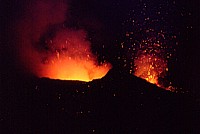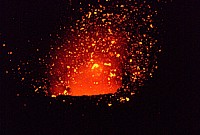| Etna
index |
||
| Geology | Geological history | Cones and craters |
| Eruptive characteristics | Eruptions before 1971 | Eruptions since 1971 |
| Etna and Man | References | Web sites |
| Weather forecasts | FAQ | Latest news |
| As
the year 1997 draws to a close, the discovery of Etna and its environment
continues. This photograph was taken in late November 1997 during
a hike to the upper course of the Alcantara river, which passes
to the north of the volcano and separates it from the adjacent Peloritani
mountains. The snow-covered mountain is seen here at sunset, a scene
of peace and serenity. But at the same time, three of Etna's four
summit craters are in eruption, and frequent swarms of earthquakes
raise fears about an impending flank eruption (which actually is
still nearly four years away) |
Etna
photo gallery: 1997
Life on Etna, part 2: The eruptive activity
![]()
Continuation
of the photographic record of eruptive activity in 1997. Here we
see the images of August through November 1997 (after that I returned
to Etna only in early January 1998), which show the volcano in great
splendor. Unfortunately it was during this period that my camera
went on strike (the aperture mechanism did not function well), and
the photos of two summit visits on 28 September and 9 October were
lost. It was Murphy's Law that did function very well instead, for
on 28 September the Bocca Nuova was more impressive than during
any other of the 1997 visits: the intracrater cone in its northwestern
part had grown considerably, with an 80 m-diameter summit vent that
was filled with a very active lava lake, which could be observed
relatively safely. By 9 October much of this lake had frozen over
and activity occurred in a relatively small area on its western
side. One month later, when I had again a working camera, the same
cone had grown to about 50 m below the rim of the Bocca Nuova, and
thus stood about 100 m above the pre-1997 elevation of the crater
floor. The rapid filling of the enormous pit of the Bocca Nuova
stimulated the phantasy of all who study and love the volcano: sooner
or later the crater would be filled to overflow, and there would
be a great show... This show did actually come two years later,
in October-November 1999. |
|
Seventh summit visit, 5 August 1997
Eighth summit visit, 11 August 1997
Ninth summit visit, 30 August 1997
Tenth summit visit, 3 September 1997
Eleventh summit visit, 28 September 1997 The photos were taken by geologist Carmelo Monaco, University of Catania
Twelvth summit visit, 9 October 1997 The only photos taken during that visit (by Marco Fulle) are available at Stromboli On-line, but they certainly are much more beautiful than any of those I would have made had my camera worked correctly! Thirteenth summit visit, 6 November 1997
|
|||||||||||||
Copyright © Boris Behncke, "Italy's Volcanoes: The Cradle of Volcanology"
Page set up on 30 June 2003

